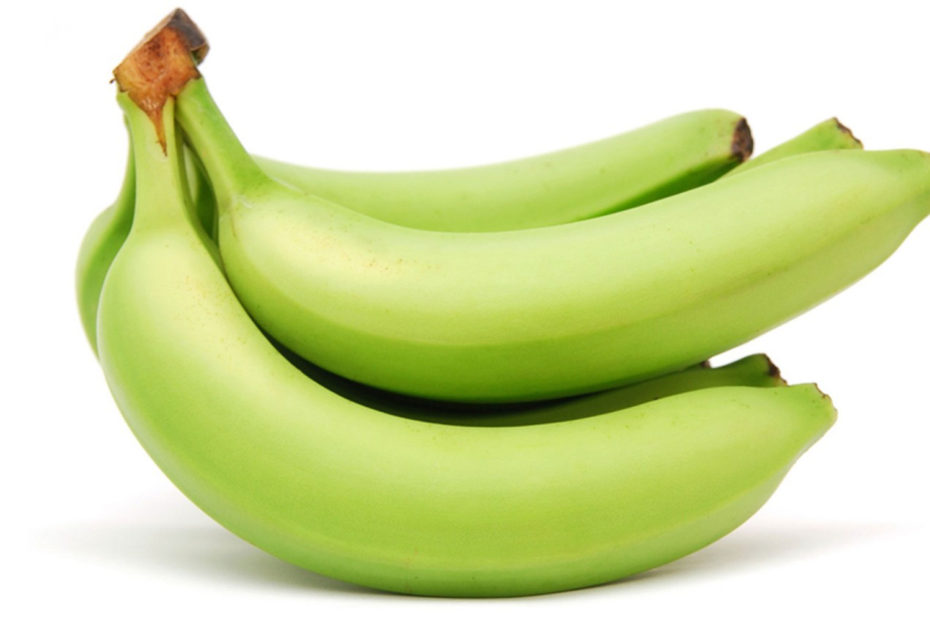Green banana and gut health? How do they come together?
When it comes to thinking about your bodily health, the majority of medical professionals agree that there are few things more important than gut health. Gut health is believed to strongly influence the overall health of the other parts of the body and is believed to play a key role in how the body processes a variety of ailments. The fact of the matter is that keeping your gut health in line can easily help your body to operate more effectively and help your ability to fight diseases in the unfortunate event that they arrive. With this in mind, it comes as absolutely no surprise that people are looking for new and exciting ways to help manage and improve their gut health. One interesting new breakthrough in this area is the consumption of green bananas.
Why a GREEN Banana?
The majority of banana enthusiasts are used to waiting for their bananas to turn a delightful yellow color before eating them. In fact, some people even prefer their bananas slightly browned. While many make the case that bananas taste and feel better after a bit of time, the reality is that this is a bit of a health oversight on behalf of humanity.
A green banana contains high amount of fiber. It is through the ripening process that enzymes break down the fibers and turn them into sugars. If anyone has ever tried to eat a green banana you would find it very difficult. As the ripening process continues past ripe the banana starts to break down. At that point we consider the banana “over ripe” and we use it for baking purposes mostly. This is because the enzymes have broken down almost all of the fibers making the banana mushy and brown but also very sweet!
As mentioned green bananas are not the most desirable form of banana to eat so why do it? It’s all about the fiber. The fiber that makes up the green banana is considered a Prebiotic. Prebiotics are considered the food that the probiotics within the gastrointestinal tract consume. Majority have heard of probiotics at this point and all the positive benefits they provide to the body. Pre-biotics are an essential componate to rebalance the microbiome.
How Prebiotics and Probiotics Work
While in a conference a few years ago, a physician explained it like this: your GI is like a yet to be lawn. First you lay down the grass seed. The grass seed is like the probiotic. To make the seed grow it need the proper environment and food. The environment is the environment of the GI tract itself, is it acidic or base and what other bacteria are there fighting for space (weeds). Then it needs the fertilizer, the food, the prebiotics.
It’s normal to have to lay grass seed a few times, take probiotics for a few months. It should not be necessary to have to lay grass seed forever or even every year. It’s the environment and the food you give the lawn as it grows to keep it healthy and keep the weeds out. In relation to the GI you want to put in the probiotics and provide them with the correct components to allow them to set up residence and provide continual benefit. When that happens they will multiple themselves just as any other living organisms.
Foods and Fibers
There are fibers in many foods, especially when eaten raw, that act as prebiotics, but there is a short list of foods that contain the highest content of prebiotics
- Green banana
- Raw potatoes
- Jerusalem artichoke
- Chicory
- The thick part of fruits and vegetables that are normally cut off such as the center core of a pineapple and the white bottom of celery.
Who eats these?! Far and few in between!!!
It’s one of the reasons we as a society have issues keeping our microbiome healthy and take way more probiotics than necessary. As a Nutrition Therapy Practitioner this is an area of true importance to me and my clients. What I try to accomplish:
- A healthy GI that is sustainable long term without having to be on supplements or probiotics forever
- Save money!! Meaning not waste money and time on probiotics that don’t work or without the necessary cofactors to make them stay and grow.
- Make a lifestyle out of eating foods that keep us not just healthy but absolutely vibrant and resilient.
Let’s be honest, I’m going to be realistic when adding in prebiotics. My kids need to eat them too! We don’t eat potatoes so they are not in the house to eat them raw. Jerusalem artichoke is hard to come by but delicious when I do. I do get chicory in my tea, but it’s not too many of my clients that enjoy the taste, and my kids do not. On top of that when boiled out a lot of fibers are not consumed. That leaves pineapple core and green banana! The pineapple cores I put into a blender with the French vanilla core support protein mix, coconut yogurt and make a delicious shake out of! And for the green banana…
Make it Easy!
Fortunately, I have found a powdered green banana product! It’s absolutely wonderful. I incorporate it in all smoothies (along with a powdered probiotic). I also incorporate it in my Gut Repair recipes where I make sweet treats into repairing medicine for the body. You can purchase supplements that also have prebiotics and if undergoing a GI repair program it may be worth it. For, forever maintenance, it’s much more cost effective and realistic to incorporate prebiotic foods daily. Personally the green banana powder has made that extremely easy and realistic in my household and for my young children.
For the green banana product I use, and recipes I incorporate them in, find the links below.
Resource Link: https://res.mdpi.com/d_attachment/nutrients/nutrients-11-01222/article_deploy/nutrients-11-01222.pdf

